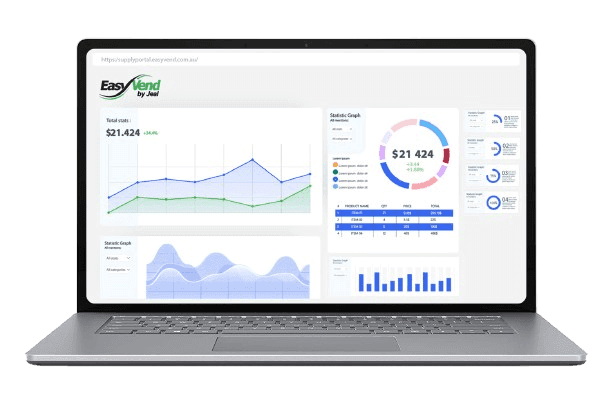Introduction The modern retail industry in Australia is evolving at a breakneck pace. From grocery chains and fashion boutiques to convenience stores and online pop-ups, retailers are under increasing pressure to manage stock, orders, and customer expectations in real time. Manual tracking methods—once the standard for inventory and order management—are struggling to keep up with
Introduction
The modern retail industry in Australia is evolving at a breakneck pace. From grocery chains and fashion boutiques to convenience stores and online pop-ups, retailers are under increasing pressure to manage stock, orders, and customer expectations in real time. Manual tracking methods—once the standard for inventory and order management—are struggling to keep up with the complexity and speed of today’s retail landscape.
As the demand for instant fulfilment and accurate stock transparency grows, retailers are finding that clipboard counts and spreadsheet logs often result in errors, delays, and lost revenue. This is particularly true in high-traffic retail environments where timing and precision are critical. Fortunately, digital alternatives are becoming more accessible and tailored to the needs of local Australian businesses. Many are turning to automated order management software to streamline operations and reduce errors associated with manual tracking.
This article explores the shortcomings of manual tracking in fast-paced retail, outlines the risks involved, and highlights smarter, tech-driven alternatives that are transforming the way Australian retailers operate.
Key Points
- Manual tracking can’t keep up with the demands of modern retail environments.
- Errors in stock levels, delayed orders, and poor customer experience are common issues.
- Fast-paced industries require real-time, integrated solutions for order and inventory management.
- Automation and digital tools provide accuracy, speed, and operational efficiency.
- Australian retailers are increasingly adopting smart systems to remain competitive.
The Nature of Fast-Paced Retail
Retail in Australia has undergone significant transformation in the past decade. With the rise of e-commerce, same-day delivery expectations, and multi-channel shopping, speed and accuracy are paramount. Consumers expect accurate stock levels, fast checkout, and seamless order fulfilment, whether they’re shopping online or in-store.
In this environment, any delay or misstep can result in lost sales or customer dissatisfaction. Retailers need systems that provide live data, support agile decision-making, and eliminate the risks of human error. Unfortunately, manual tracking methods are ill-equipped for the job.
What Qualifies as Manual Tracking?
Manual tracking typically involves:
- Logging stock and sales on spreadsheets or paper forms
- Physically counting inventory during stocktakes
- Manually inputting order details into separate systems
- Using whiteboards or notebooks to track deliveries and returns
While these methods may suffice for small-scale operations, they become error-prone and inefficient as retail volume increases.
Key Failures of Manual Tracking Systems
1. Human Error
Even the most diligent staff are prone to mistakes. A single misplaced digit in a spreadsheet, or an overlooked figure during a stocktake, can result in inaccurate inventory data. These errors can lead to overstocking, stockouts, or double orders—all of which affect profitability.
2. Lack of Real-Time Updates
Manual systems don’t provide real-time visibility into stock levels or order status. This can be problematic in fast-moving sectors like grocery or fashion, where product availability changes hourly. Inability to track inventory in real time leads to missed opportunities and disappointed customers.
3. Time-Intensive Processes
Manually entering data, cross-verifying reports, and reconciling inventory is time-consuming. That’s time better spent on customer service, merchandising, or marketing. Labour-intensive processes also slow down operations during peak hours or holiday seasons.
4. Poor Communication Across Teams
In a retail environment where sales teams, warehouse staff, and admin departments must collaborate, manual tracking creates silos. Information is often not shared promptly, leading to miscommunication, delays, or duplicated work.
5. Difficulty Scaling Operations
Manual methods don’t scale well. As your business adds more locations, SKUs, or sales channels, the complexity multiplies. Retailers looking to expand or diversify their offerings find that manual tracking becomes a bottleneck to growth.
The Impact on Customer Experience
One of the major downsides of manual tracking is its negative impact on customer service. If a customer places an order and the item is actually out of stock, that sale is not only lost, but it damages your brand’s reliability. Similarly, delays in order fulfilment due to mismanaged inventory can deter repeat business.
Modern consumers are accustomed to Amazon-like speed and transparency. If your internal processes can’t meet these expectations, customers will likely find an alternative.
Regulatory and Compliance Risks
In industries such as food retail or pharmaceuticals, compliance with local regulations is critical. Manual systems increase the risk of failing to meet traceability or quality control standards. Without digital audit trails, it becomes difficult to verify when stock was received, sold, or discarded—leaving your business vulnerable to regulatory penalties.
Digital Solutions as an Alternative
The move toward automation in retail isn’t just a trend—it’s a necessity. Digital tools like barcode scanners, cloud-based dashboards, and integrated order management software provide real-time insights and automate repetitive tasks.
Features of Effective Order Management Systems
- Real-Time Inventory Tracking: Update stock levels instantly as sales occur.
- Automated Order Processing: Eliminate the need for manual data entry.
- Integration with POS and eCommerce: Ensure consistency across all sales channels.
- Reporting and Analytics: Get actionable insights into stock trends and sales performance.
- Multilocation Support: Manage stock across different stores or warehouses with ease.
Case Study: Small Boutique to Multi-Store Chain
Consider a small Melbourne-based fashion retailer that started with a single store. Initially, manual tracking on Excel was manageable. But as they grew to five locations and launched an online store, errors became frequent. Items listed as “in stock” were not available, leading to customer complaints and returns.
By adopting digital inventory and order management software, they synchronised stock levels across all locations, automated reordering, and reduced customer service complaints by over 40%. Staff were freed from tedious admin work and could focus on enhancing in-store experiences.
Choosing the Right Solution for Your Business
Not all software is created equal, so it’s important to select a system that suits your business size, industry, and existing workflows. When evaluating a solution, consider the following:
- Does it integrate with your POS or eCommerce platform?
- Can it scale as your business grows?
- Is it user-friendly for non-technical staff?
- Does it offer local support and comply with Australian standards?
Many Australian retailers opt for locally developed systems that understand the regional nuances of GST, compliance, and market behaviour. These tailored solutions often provide greater reliability than generic global platforms.
Transitioning from Manual to Digital
Moving from manual systems to automated tools can seem daunting, especially for businesses with entrenched workflows. However, the transition can be gradual and controlled. Start by digitising one aspect—such as inventory tracking—before expanding to order management or analytics.
Staff training, data migration, and system integration are key steps in the transition. Choose a software provider that offers onboarding support and adequate training to ensure smooth implementation.
Future-Proofing Retail Operations
Retail is only going to become faster and more complex. Businesses that continue to rely on manual tracking risk falling behind competitors who embrace technology. Automation not only improves current operations but also prepares businesses for future challenges—be it supply chain disruptions, demand fluctuations, or new compliance standards.
With the right systems in place, retailers can scale confidently, make informed decisions, and deliver exceptional customer experiences—hallmarks of long-term success in modern retail.
FAQ: Manual Tracking in Retail
Q1. Why is manual tracking still common in small businesses?
Many small businesses stick with manual methods out of habit or due to cost concerns. There’s also a perception that digital systems are complex or unnecessary at smaller scales. However, as these businesses grow, the limitations of manual tracking become evident.
Q2. What’s the biggest risk of relying on manual inventory management?
The biggest risk is inaccurate data. This can lead to overordering, understocking, missed sales, or compliance issues—all of which impact the bottom line.
Q3. Is switching to order management software expensive?
Costs vary depending on the provider and features. However, many platforms offer scalable pricing, and the long-term savings from improved efficiency and reduced errors often outweigh the initial investment.
Q4. Can digital systems integrate with my existing POS or eCommerce platform?
Most modern systems are designed to integrate with other retail software. It’s important to choose a solution that supports your current tools or offers open APIs for custom integration.
Q5. How long does it take to transition from manual to automated systems?
The timeframe depends on the complexity of your setup. A single-store retailer may transition in a few days, while multi-location businesses might take several weeks. Proper planning and staff training can significantly speed up the process.
Q6. Are there regulations in Australia that affect inventory tracking?
Yes, particularly for food, medicine, and alcohol retailers. Accurate inventory tracking is essential for meeting health and safety regulations, tax reporting, and product recalls.
















